Final report for ONE15-230
Project Information
This project developed and delivered an improved collective innovation, distribution, education, and impact assessment platform for sustainable farm and food innovations as a result of enhancements to the FarmHack.net website (http://farmhack.org/tools).
The FarmHack.net website hosts more than 200 farm and food innovations including the results of many SARE funded projects in areas such as biofuels, planting and cultivation equipment, monitoring, and processing equipment. It is also the virtual home to FarmHack, a community of farm oriented designer-users of novel inventions licensed under a Creative Commons open-source license.
Many farm and food innovations suffer from limited distribution, collective innovation and evaluation of impact. These projects represent significant social, commercial and personal investments and their impact could be greater.
The project led to the enhancement of the FarmHack.net website to allow improved integration of SARE funded hardware and software innovation projects and others with the Farm Hack community design platform. Our project involved 17 direct participants, mainly PI’s of prior SARE funded projects from across the nation. The solution included (1) understanding the current status of SARE project result distribution and impact assessment, (2) evaluating the Farm Hack user experience, (3) articulating an improvement plan, (4) implementing a total of 16 structural and design improvements as a web development project in two stages with iterative user review, and (5) evaluating and distributing project results.
Introduction:
The Challenge
Many farm and food innovations suffer from limited distribution, collective innovation and evaluation of impact. These projects represent significant social, commercial and personal investments and their impact could be greater.
Impact does not match potential
Innovation is intrinsic to farming. Every day, farmers adapt, change, and build tools on farms across the country. SARE and Farm Hack both work to maximize the impact of farmer-driven innovation by facilitating development and sharing processes. Often, potential for regional or national impact of these projects and tool innovations is much more than their actual effect. The problems relevant to this proposal are limited capture, useful documentation, sharing, and evaluation of farm-based innovations.
Lost knowledge and lost opportunity
In the case of SARE, many good projects get lost causing farmers to start over rather than capitalize from a meaningful collection of accumulated knowledge. For farm tool innovation generally, many hacks and fixes are not shared not for lack of will to cooperate but because a useful means of sharing is not readily available to farmers. Updates to projects, iterations and replications of tools, testing and retesting, and conversations about successes and failures can be as valuable as the final report. This knowledge can be difficult to collect, curate, and make useful to farmers.
Tools for capture and sharing are missing
A tool innovation is only as powerful as its ability to be shared, evaluated, taken apart, rebuilt, improved, and shared anew. The open source software community has wrestled with this challenge and has established a taxonomy and documentation toolkit for maximizing their ability to accumulate knowledge and work.
Inefficient use of limited time on recurring problems
Often projects and tools are isolated on one farm when the same or similar problem exists elsewhere. Other times, they are neglected after their initial iteration. Farmers reinvent the wheel rather than starting from a point of accumulated knowledge. The open source framework and the Farm Hack platform can maximize the effect of an innovation, and therefore the funding impact of SARE, by giving projects continued life and a technical community of support.
One Solution
The FarmHack.net site has been the result of over 1,000 hours of web developer effort and had over 1,200,000 unique page views since 2012, with over 450,000 unique visitors. There are over 5,000 registered contributors to the site, with 300 tools posted for open source use, adaptation and improvement.
Open Source Communities are based on leveraging previously shared work. The Farm Hack Drupal Development platform is the product of cumulative open source development not only by the Farm Hack team but by contributors working on other projects which had code which Farm Hack could use to build its platform. Likewise, the modules that will be developed for this project will be added into the open source code repository for others to use and build upon.
Similarly, SARE has a strong history of funding farm-based innovations through Farmer Grants and Professional Partnership Grants. Projects range from software development to tilling, planting and cultivation equipment. This project also builds upon previously funded SARE projects which can be better documented and have their impact maximized through the Farm Hack platform.
The project need was identified by team members with community experience working with previous SARE funded projects. The value added to a SARE project by Farm Hack is the set of collaborative tools for documentation, dissemination, discussion, and tracking iterations resulting from collective innovation.
The project objectives included:
1) Understand the current status of SARE project result distribution and impact assessment. Engage with select SARE project PIs to understand what features and functionality would better help to disseminate their project results.
2) Evaluate the Farm Hack user experience: Pursue user feedback relative to ease of posting tools and evaluation.
3) Articulate an improvement plan: Based on #1 and #2, refine the following plan:
- Improved measures of site and tool traffic (page views, time on page, unique visits)
- Collaborative design enhancement (reviews, discussion forums)
- Rating and/or ranking of tools (like button, “I use this tool” button, 0-5 star ratings)
- Capture of use, revision and enhancement metrics (# of downloads, revision feedback / forking)
- Coordination of collaborative on-farm trials in multiple locations (geotagging, collaboration functionality)
- Impact assessment. We want to document testimonial impact of tools via story telling (hours labor saved, cost reduction, improved profitability, improved social sustainability, positive environmental impact).
4) Implement a web development project in two stages with iterative user review, and
5) Evaluate and distribute project results.
Cooperators
Research
Method for Objective 1, Understand the current status of SARE project result distribution and impact assessment:
We engaged with select SARE project PIs across the nation to understand what features and functionality would better help to disseminate their project results. We reviewed the SARE project website and surveyed 49 project PI’s whose project description suggested a project output that could be documented in Farm Hack. We received responses from 11 (22%) which were helpful in refining and clarifying our project plan and in identifying future project partners.
Method for Objective 2, Evaluating the Farm Hack user experience:
The project team solicited user feedback relative to ease of posting tools and evaluation. This was done as part of the survey activity and method noted above. We presented the respondents with our planned scope of feature development and asked for feedback regarding what features would be most beneficial to them in documenting their SARE project results and outcomes leading to improved impact and evaluation of that impact. This feedback helped to address the following scope item.
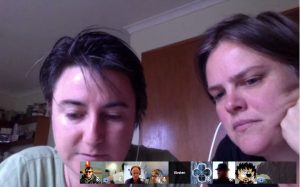
Method for Objective 3, Articulating an improvement plan:
The project team proposed the scope of work using the following plan:
- Improved measures of site and tool traffic (page views, time on page, unique visits)
- Collaborative design enhancement (reviews, discussion forums)
- Rating and/or ranking of tools (like button, “I use this tool” button, 0-5 star ratings)
- Capture of use, revision and enhancement metrics (# of downloads, revision feedback / forking)
- Coordination of collaborative on-farm trials in multiple locations (geotagging, collaboration functionality)
- Impact assessment. We want to document testimonial impact of tools via story telling (hours labor saved, cost reduction, improved profitability, improved social sustainability, positive environmental impact).
Following completion of Objectives #1 and #2, we were able to refine this plan with SARE PI and user input to affirm and improve the scope as noted in the next section (Results).
Method for Objective 4, Implementing a web development project in two stages with iterative user review.
The implementation of the development plan was accomplished by engaging two web development consulting firms based on their specific areas of expertise (Isovera and Tamarack Media) in a two stage development process punctuated by user and project team review and feedback.
Method for Objective 5, Evaluating and distributing project results.
The evaluation and distribution of project results involved progressive design review and interview of users to understand how the site changes would impact user behavior and ultimately documentation of project results and outputs. The project was presented at several meetings and conferences and two webinars were hosted near the completion of the project period to highlight the improvements in real time with an audience and to solicit additional feedback.
The completion of Objectives 1 and 2 resulted in significantly new perspective on the design approach. User feedback helped to direct the web development plan to accomplish feature delivery with the most benefit to easing documentation and sharing of tools (project outputs).
Specifically, the development plan was focused with the following revision:
- Tool reviews / tool rankings (e.g. 0-5 stars): Buttons on tool pages for users to indicate their 1 to 5 star rating of the tool. Also data displayed on the tool to indicate the aggregate of all users’ ratings.
- Capture of use (“I have built and used this tool” button): A button on tool pages for users to indicate that they have built this tool and corresponding aggregate data displayed on each tool page.
- Impact assessment: Related and specially marked posts by users related to a specific tool pages for detailing how the tool was used, how much labor was saved, cost reductions, improved profitability, etc.
- Tool searching and wiki formatting: Integrate searching of tool reviews and related documentation to enable users to more easily find and contribute to documentation of tools on the Farm Hack page. This may include incorporation of tags and categories in the tool creation portion of the site.
Farmer interviews were conducted to review the design changes made based on the Phase 1 (2015) updates. This interview and orientation process was intended as a “walk-through” demonstrating the new features of the site for documenting project outputs. The interviews guided further refinements completed in the Phase 2 (Fall of 2016). The user feedback was summarized as follows:
- Lower the Bar - Make it clear that a very minimal level of documentation is acceptable for a user to post a tool. The prior tool documentation framework included many sections and was heavily focused on written documentation which users found to be intimidating and daunting. Users interviewed suggested that a simple set of pictures, a video and some simple explanatory text may suffice for getting the tool documented and effectively shared in away that would promote replication and adoption. Specific user feedback:
- Include links to help, or guiding help text along the path to documentation to make in-situ learning easier.
- Use color to differentiate sections of the tool documentation page.
- Be more clear about which sections of documentation are “required” and which are optional.
- Make it easier to edit and organize pictures and text inline (i.e. instead of media upload, etc.)
- Implement a “draft” tool feature to allow users to chip away at documentation.
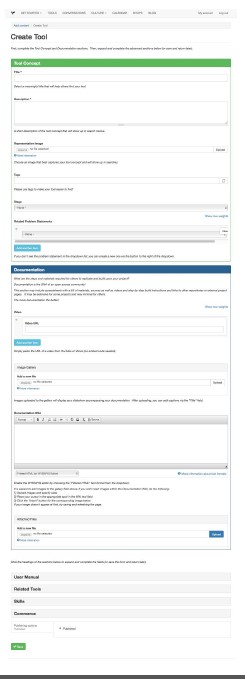
- Encourage Dialogue - Make it easier to discuss tools. Following on the first piece of feedback, users also were keen to improve the mechanism for dialogue and tool feedback. Having a tool minimally documented and allowing for easier crowd-sourcing of design feedback and input was seen as a means to accelerate tool maturity and impact. Specific user feedback:
- Improve the comments function and forum capability.
- Include help text updates to encourage collaboration and guide documentation best management practices.
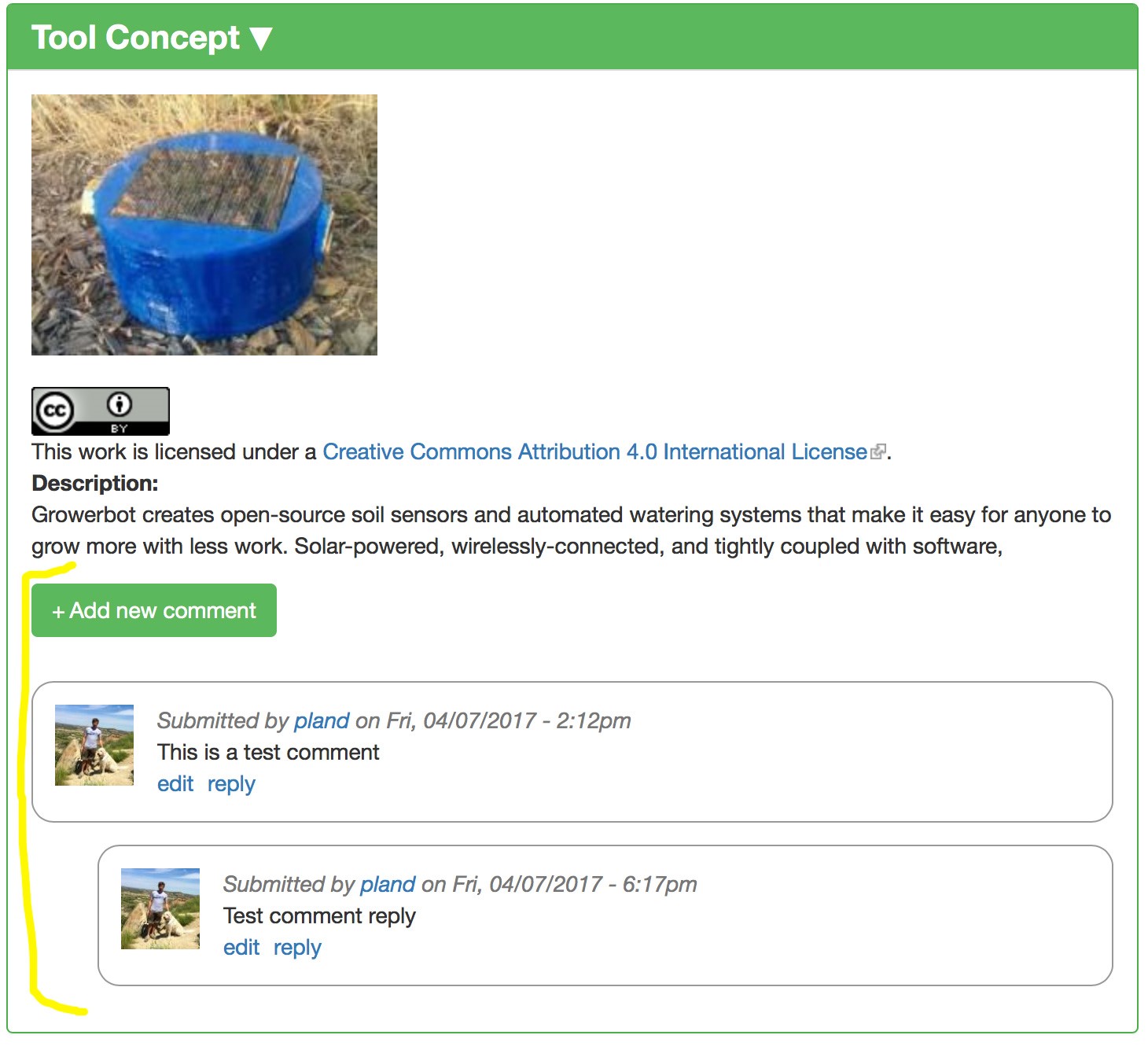
- Mobile Friendly - Make the site more easily usable on mobile platforms. Users who were keen to document their tools indicated that they were most likely to do so when standing in front of the tool with a smart-phone or other mobile device in hand. Having a site that caters to that operating platform is critical to enabling the early, easy and recurring documentation and dialogue surrounding innovative tools. Specific user feedback:
- Improve / adopt responsive design template to better serve the site content on mobile devices.
- Improve the ease with which phone video and pictures can be used as documentation.
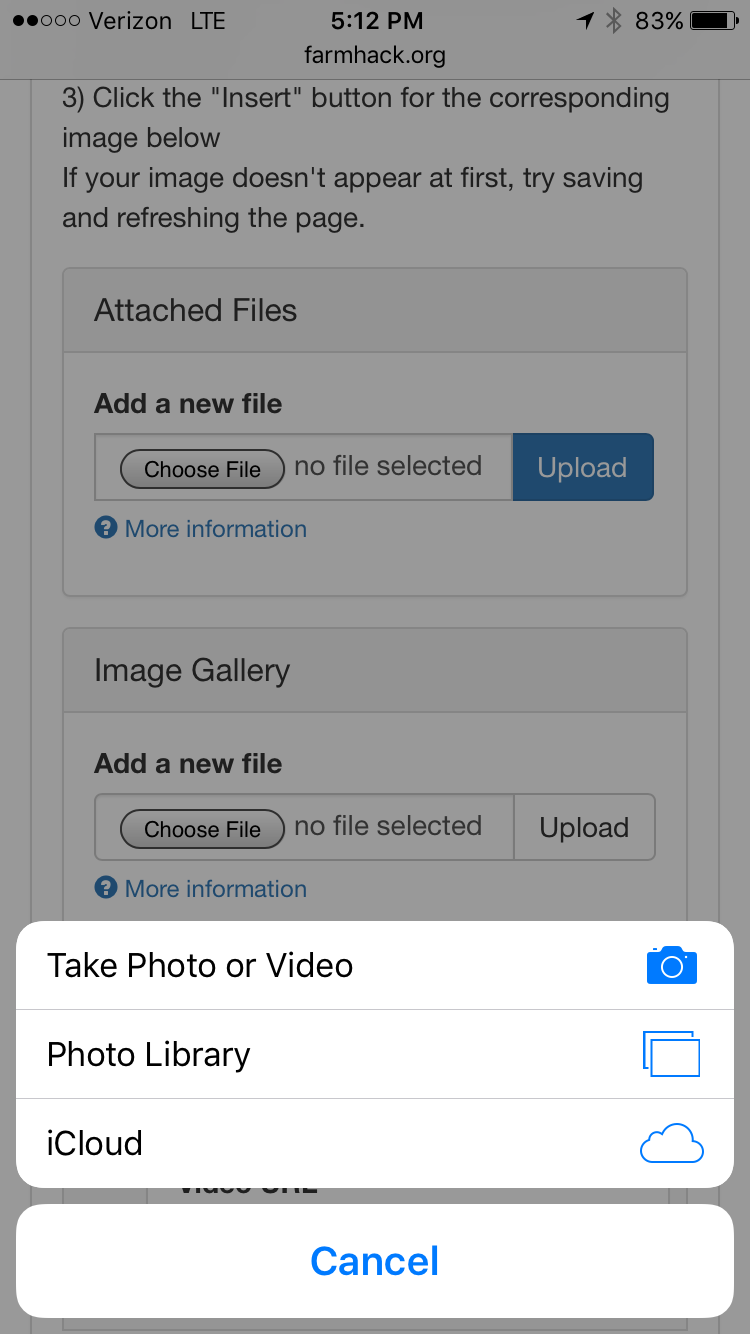
- Generally, Make it Easier to Use - Users were very helpful in identifying nuance and areas of confusion in the site and interface which helped the design team to zero in on specific development tasks that would ease future use. Specific user feedback:
- Include a “My Tools” section of user’s profile following login to help users more easily manage multiple tools at different stages of documentation.
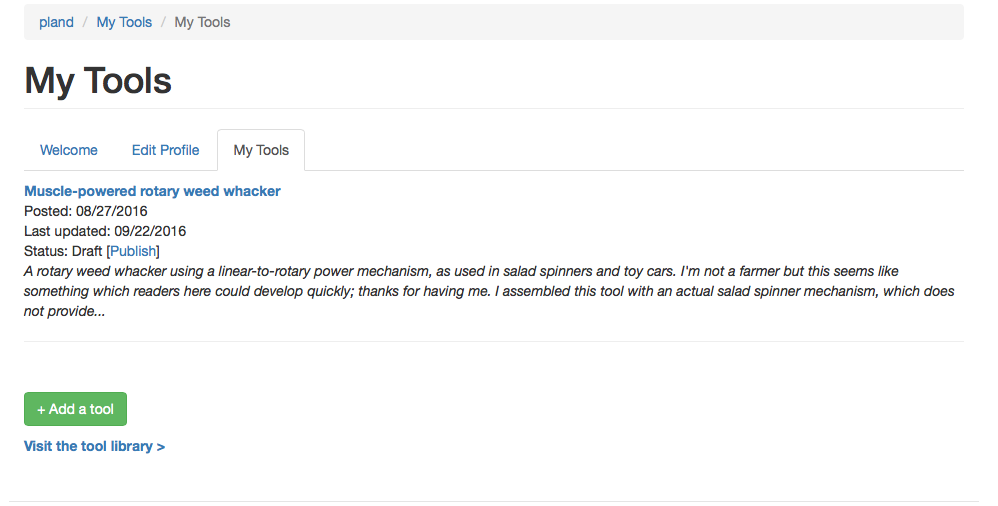
- Improve search functionality - Change default search display and enable tools to be highlighted on the front page without any HTML coding.
- Improve problem statement fields by providing more informative guiding text.
- Changed display to include tags and open source licence information
- Include an “Impact Report” section to help users easily note farm impact of the tool.
- Launch “like” and “use” buttons to capture whether users “like” a tool and also whether they “have used” a tool.
- Create template for better integration into farmer-grower grants
A full list of development activities is available on the FarmHack Waffle Board (https://waffle.io/farmhack/farmhack.org).
Education & Outreach Activities and Participation Summary
Participation Summary:
Project educational activities engaged 338 participants as follows.
In addition to targeted Farmer interviews based on the 2015 updates, the project was also presented at agricultural gatherings the NOFA NY Winter Conference (January 2016, Saratoga Springs, NY, 65 participants including a design workshop), the Slow Tools gathering at Stonebarns Center for Food and Agriculture (December 2016, NY, ~45 participants), NOFA MA Summer Conference (August 2016, MA, ~35 participants), and was presented as part of several sessions and pre-conference work at the Pennsylvania Association for Sustainable Agriculture (PASA) Conference (March 2017, PA, ~100 participants).
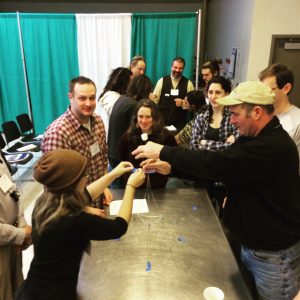
Two project webinars were held toward the end of the project period to highlight the result of the project and provide a walk-through of the Farm Hack tool pages and interface. These webinars reached a total of 63 participants and a recording is available online (https://www.youtube.com/watch?v=Jun3f719Tfw).
The project also result in approximately 30 consultations in the process of soliciting user feedback and design review by interviewing and engaging individual participants.
Learning Outcomes
Project outcomes were primarily captured in concluding interviews with users who had been part of the development process.
Some examples of feedback from round 2 interviews which included phone interviews with SARE PIs as well as participants from the Slow Tools conference.
“Problem statement is very much like SARE grant structure - I get it.” This comment was especially important because it was one of our chief worries to introducing the concept into tool documentation. New tools have all included the problem statement and the usefulness of the concept seems to be connecting with users.
"Everything doesn't need to be filled out does it?" This comment was useful in our efforts to communicate the minimum level of documentation, and also to communicate when a tool was “published” and shared publicly or still in a draft format.
“It would be great to be able to have a personal portfolio" This comment was easily implemented into a "my tools" portfolio for projects that are ongoing.
“My problem is that I hate typing so I get my wife to do it.” This comment indicated that participants desire to submit was limited by technical comfort and means of communication and/or documentation, but that the desire to share may balance the discomfort. The implication is still that if the barrier it too high, clearly fewer contributions will be submitted. This comment was significant in informing the Phase 2 work and encouraged a focus on easing documentation in visual formats as noted above.
“I would rather attach a bunch of images and videos” - This comment reinforced others; a recurring theme. Videos are a powerful means of communicating complex content. Until this comment, although videos could be embedded, the process was not easy and its development had not been a priority. This, and other comments, were influential in making attaching videos easy, even from a mobile phone, and emphasizing video documentation first.
“I would like to see this project get more visibility, and actively linked to web sites visit for other reasons” This comment was given in the context of an organic grain farm/retailer that felt that the common platform would greatly benefit their users, and that farm hack is easy to navigate, user friendly, but more organizations are need to funnel people to it. The same interviewee also singled out e-Organic as an example where elements of Farm Hack could be integrated to make the content more user friendly and more easily discovered.
“The problem statement makes sense and I would like to have a place where farmers are going first - but the challenge being how do we make it more valuable for them so they can better understand what is already out there.” This statement articulates the benefits of a common platform being used by an active network. The same Grain Company also thought that Farm Hack would be a really useful tool to document customer projects and techniques in a central location so that they would not and not have the same conversation with 100 people.
"Farm Hack could be “the United Nations” for agricultural tools"
Project Outcomes
A critical part of this project's success rested in the early identification of project partners who were both SARE PI's and also interested in FarmHack and open-source sharing. Our early development of a database of SARE projects with tool outputs helped to identify a population for future collaboration and input as the project progressed. Additionally, the existence of two, known, web-development contractor partners helped to facilitate rapid development and deployment of features for trialing and testing among the target audience.
FarmHack development will continue and will leverage the work of this project. The project has helped to re-affirm the fundamental value of the platform and its developmental trajectory. As with any open-source project, the site itself benefits most from the feedback of users which includes anyone innovating open-source tools in agriculture. A key next step for the project team is spreading the word about the new changes resulting from NE-SARE support to motivate additional users.